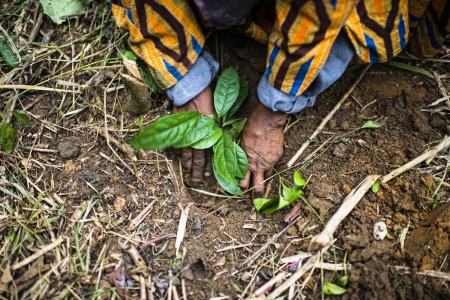2015 additional text: In the specific context of the WLE ES&R Framework and the Sept 2014 Extension Proposal, this project contributes directly to: a) the design and implementation of economic incentives for enhancing (agro)biodiversity and related ecosystem services and their resilience, with a view to facilitating the use of such mechanisms in playing an important role in genetic resources governance at the community and landscape scales; b) creating new income generating opportunities for women and men farmers through their ability to capture public good ecosystem service provision values; c) identifying and testing related indicators and metrics with which to establish baselines, and assess ecosystem service impacts and trade-offs. d) Participatory tools and gender-sensitive approaches are also used with a view to motivating farm level actions in a collective action context (in order to ensure that critical thresholds are met/maintained). The project activities have been co-designed/co-developed together with our local indigenous NGO partner, UNORCAC. The work has also been presented to members of the Andean Parliament and the national agricultural research center, INIAP, with a view to facilitating upscaling/outscaling once initial results become available in 2015. In addition an opportunity has arisen in the last few weeks to explore/apply similar ABD-related ecosystem service indicators as part of a process supporting the national uptake of payments for agrobiodiversity conservation service (PACS) schemes in Peru; with this PACS process currently being spearheaded by the Ministry of Environment and in collaboration with the Ministry of Economics and Euro Eco Trade. Original 2014 text: The maintenance of ABD generates a mixture of private and public good benefits associated with the provisioning, regulating, cultural and supporting ecosystems services of ABD. However, it is argued that it is precisely the existence of these public good values (i.e. positive externalities), which have non-market values associated with them and which have not been properly valued or accounted for by individuals and society, that is leading to an underinvestment in the maintenance of ABD and is hence a major reason for its loss. Effectively, private good values that can be easily appropriated by individual farmers are being traded-off against unvalued public good ecosystem services that benefit broader society and are much more difficult to appropriate individually. The danger is of course that the trade-offs between income-related dimensions of livelihoods (e.g. those related to provisioning services) and those dimensions related to minimising livelihood vulnerability to shocks beyond the control of the farmer as well as maintaining ecological processes and future option values (all of which are associated with the regulating and supporting services) are ignored and that the unaccounted losses are significant. While improving the provisioning services provided by agriculture has been and promises to remain a primary gateway for overcoming poverty, the dynamics of how to achieve poverty alleviation are changing rapidly with the declining availability of ecosystem services. Hence, in addition to calculating future production values of improved varieties, it is also necessary to account for the value of the improved delivery of ecosystem services by crop genetic diversity in agro-ecosystems. The existence of such poorly understood trade-offs has important implications for the design and evaluation of interventions (including for poverty alleviation) and incentive mechanisms designed to align private and public values. Consequently, generating information that can help to improve understanding of the underlying market and non-market values of ABD-related ecosystem services, as well as their contribution to livelihoods and the welfare of broader society, is a prerequisite to advance the design of instruments to capture such values. Interventions based on such information can then be used to correct the perverse policy intervention and market failures that undermine maintaining this crucial ‘green infrastructure’ for the poor and facilitate its use an instrument for economic development. Furthermore, as more effective methods for valuing ecosystem services become available, together with information management, the potential for ‘win–win’ scenarios increases, whereby both benefits of ecosystem services and reduced disservices from agricultural activities can be achieved. Tradeoffs that occur between provisioning services and other ecosystem services and disservices may be evaluated in terms of spatial scale, temporal scale and reversibility.
menu










